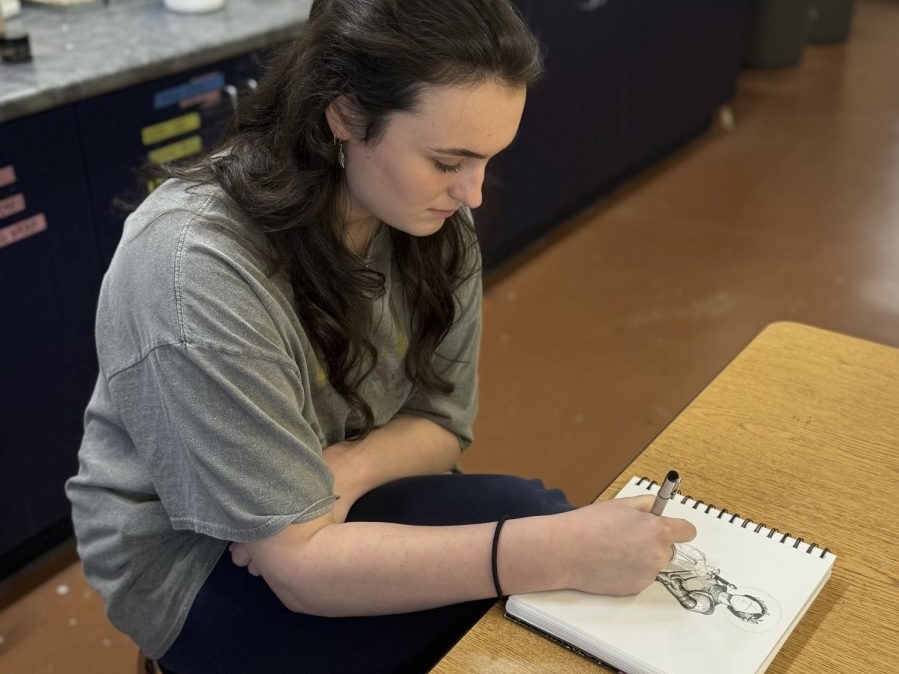Guillermo del Toro’s most recent artistic triumph, “The Shape of Water,” is a menagerie of genres, a mixing pot of cultural tones and enlightened idealism with a healthy dose of cinematic homage. After 25 years in the filmmaking industry, del Toro is certainly no stranger to the monstrous and the mythic, tracing his success back to pieces like “Hellboy” (2004) and “Pan’s Labyrinth” (2006). “The Shape of Water” is evidence of an artist at the very peak of his artistic control, when both his monsters and his human touch are more expertly fine-tuned than ever.
While many of his films can be deemed “masterpieces” in their own right, his newest film is particularly outstanding in that it is unflinchingly authentic. No movement is made, no breath taken without the express control of del Toro: each moment is so beautifully and entirely his own. It takes an undeniable boldness to make a film like this, one so explicitly Othering that its success during this recent award season is astonishing. While del Toro has always had one foot stuck in fairy tales, with each film mired in a childhood fantasy, “The Shape of Water” is another beast in and of itself.
“Tragedy and delight, hand in hand,” Richard Jenkins, as Giles, says to the heroine of del Toro’s adult fairy tale, Elisa (Sally Hawkins). These twin ideas — tragedy and delight — are at the core of the film, inextricably intertwined in an ever evolving dance which arches through heavy subjects such as the rise of anti-communist sentiments, race relations and expanding gender roles. Not alternating between the two, but rather incorporating both in each and every shot, del Toro deftly conquers overarching and relevant themes of love amidst cynicism and hope in spite of fear.
Aided by its nearly flawless technical achievements, such as its phenomenal editing, scoring and artistic direction, “The Shape of Water” is a heavyweight regardless of its less grounded content material. With an expert control over cinematography, scene composition and editing, “The Shape of Water” flows smoothly and proudly. The use of symbolism — the apartment above an aging movie complex, the use of greens and yellows, Elisa’s gill-like cuts coupled with her muteness, etc. — is nearing heavy-handed at times, but it clearly and vividly expresses a cinematic language that, in a film so centered around the lack of speech, is intrinsically important. Alexandre Desplat’s score, which earned it a Best Original Score nod at January’s Golden Globes, is brilliantly composed, complementing the atmosphere created through gorgeous and immersive set design. Del Toro’s films are well known for their intricately designed costuming — inhabited in large part by an ever patient and talented Doug Jones — and “The Shape of Water” is no different.
In addition to the unbelievable talent of the central actress Sally Hawkins, the supporting cast was one of the strongest of the season. Del Toro’s screenplay, utilizing Hollywood’s most beloved stock characters, breathes new life into tired tropes, reinvigorating old film ideas for modern audiences. Both Michael Shannon and Michael Stuhlbarg, whose talent is always painfully underutilized, shined in their roles. Shannon, though occasionally veering nearer and nearer to overacting, was a powerhouse within the film, his repartee with cinema’s newest silent star expert and menacing. Octavia Spencer, as Elisa’s workplace confidant and close friend, was fantastic as always, taking and remodeling the stock roles that del Toro’s writing revolutionizes so well. As previously mentioned, Jenkins as Elisa’s closest friend facing obsolescence provides one of the film’s strongest performances, stealing the scene with heartfelt soliloquies.
“The Shape of Water” is undeniably a filmmaker’s film: rooted in an intricate and vast knowledge of film which is utilized throughout the editing, acting and directing of the movie. Del Toro’s auteurship is finally emboldened with a sense of self that, while never truly missing from his prior films, was wholeheartedly cemented with this work. While maybe not as jaw-droppingly outstanding as his prior works — specifically “Pan’s Labyrinth” — “The Shape of Water” will doubtlessly go on to become a timeless classic, a love story with no borders, made for a world whose own boundaries are rapidly falling.

















